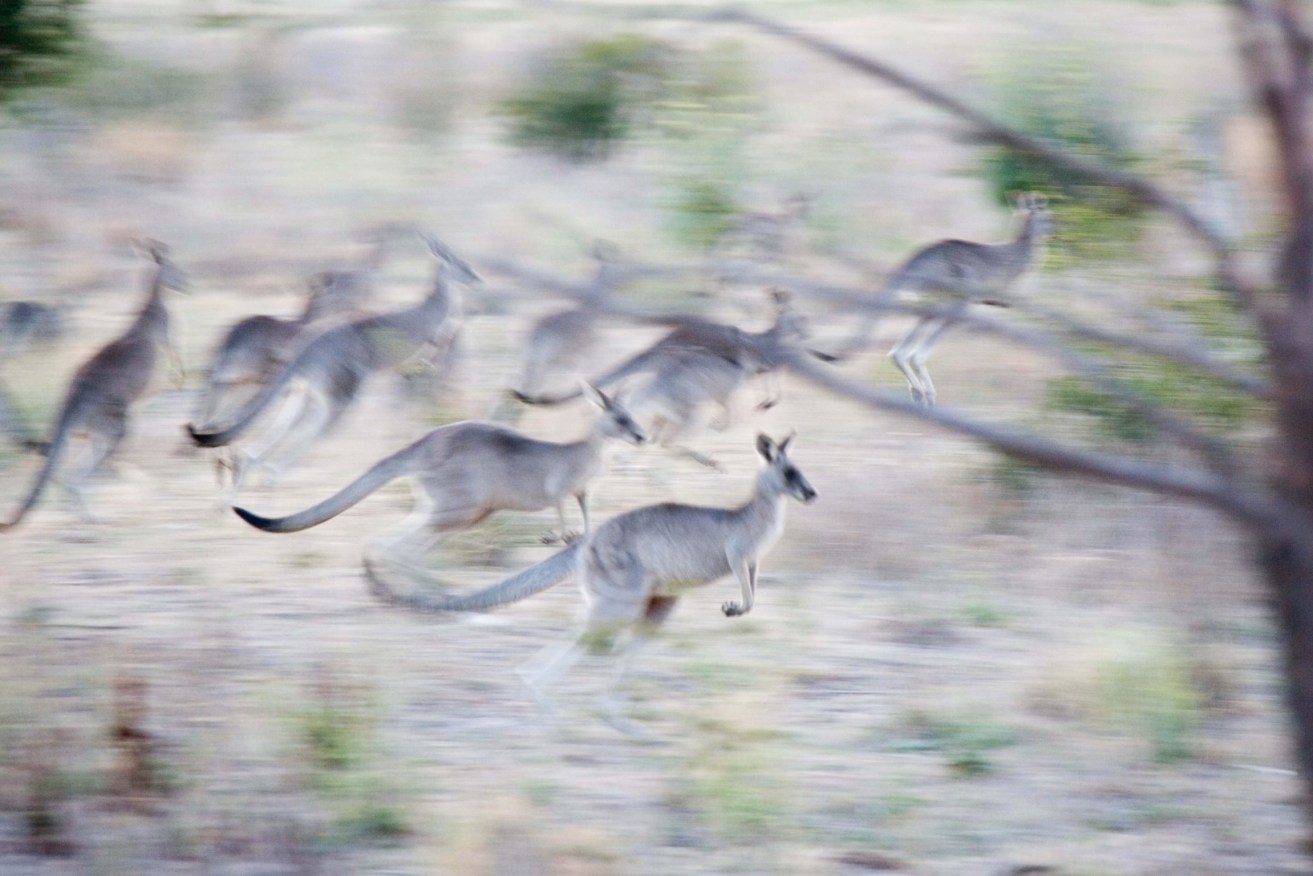New data leap for kangaroo harvest numbers
Kangaroo surveys are being overhauled in South Australia, with new data modelling helping set quotas for harvesting animals for human and pet food consumption.


Photo: John Schilling
The change was triggered by three new regions of the state being opened to commercial harvesting of kangaroos, wallabies and euros under a new state management plan released earlier this year.
It also follows kangaroo numbers peaking at five million a few years ago, following good years of rain.
When the annual aerial survey starts on June 15 and continues until July 10, the Environment and Water Department is now backing its numbers with predictive population models developed with the University of Adelaide.
“Using models to predict population numbers for some harvest subregions where we have long-term data will enable the survey team to concentrate their efforts on the newly opened harvest areas,” department spokesman Anthony Freebairn said.
“Harvest sub-regions with traditionally high harvest will continue to be surveyed annually, but other sub-regions will be surveyed on a less frequent rotational basis.”
For the first time in 42 years, scientists will now cross reference historic drought and rainfall data with former surveys to predict kangaroo numbers.
The new South Australian Commercial Kangaroo Management Plan 2020-2024 allows licence holders to harvest kangaroos in the new areas of Yorke Peninsula and the mid North, Hills and Fleurieu Peninsula, upper and lower South East and Kangaroo Island.
But operations manager for the kangaroo management plan Tom Gerschwitz said harvesting was currently suspended on Kangaroo Island.
“After the catastrophic fires on Kangaroo Island no kangaroos have been harvested and it has been suspended until there is a reassessment of the population,” he said.
Since the new management plan was released in January, Gerschwitz said 15 new commercial harvesting licences had been granted across a range of areas in South Australia.
But he said that the commercial kangaroo industry quotas were rarely reached. The number of kangaroos harvested last year was 100,000, and this figure was below the set quota.
Kangaroos are used for human consumption, leather and pet food, with Gerschwitz adding that all commercial licence holders must meet strict guidelines and complete TAFE training in humane killing of kangaroos and handling of carcasses.
He said the new data modelling used 42 years of information collected through a range of aerial, driving and “walk-through” counts to predict numbers based on climatic conditions like drought or rain.
Gerschwitz said kangaroo populations rose dramatically in high rainfall years, numbers reaching a record level of five million kangaroos in 2017 compared to about 3.4 million in 2019 when numbers were affected by drought.
“Kangaroos are very responsive to climatic conditions,” he said.
“The goal of the management plan is to sustainably harvest kangaroos, making sure they are present across the landscape where they have previously lived and to ensure that continues for your kids and my kids into the future.”
Gerschwitz said human intervention meant populations had swelled, the state’s dog fence for example meant the kangaroos’ main predator, the dingo, was no longer hunting the native animals.
There were also new water sources in pastoral areas leading to numbers rising and creating “a balancing act in protecting kangaroos, managing the natural environment and also from an agricultural industry perspective”.
This is story is part of Solstice Media’s Regional Showcase series and awards program. Each week we will bring our readers regional news stories that matter as well as some inspirational tales of individuals and communities doing what country people do best – having a go.
If you have a tale to tell or know of one, get in touch at South Australian Regional Showcase.




